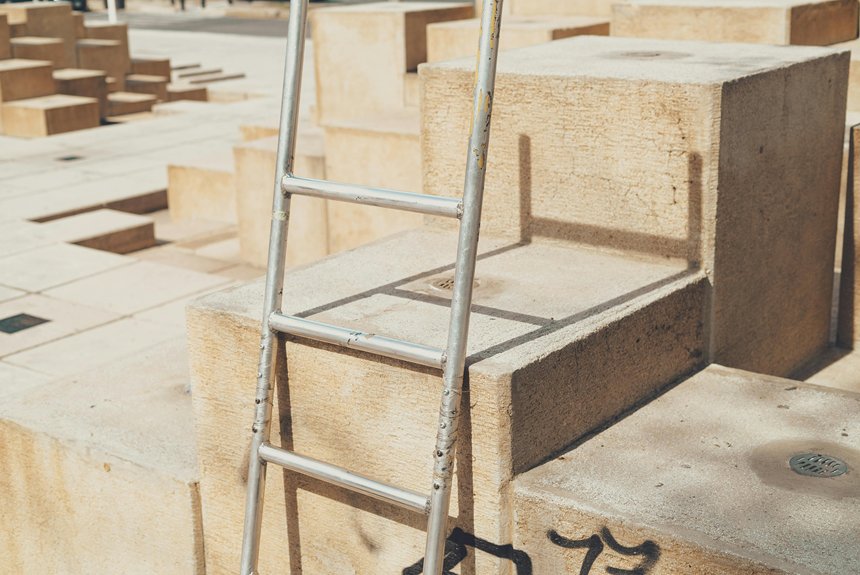When it comes to installing a basement waterproofing drain channel, you need to follow a systematic approach to guarantee effectiveness. Start by evaluating potential water issues in your basement and gather the necessary tools and materials. It’s vital to plan the layout methodically before moving on to excavation. Each step builds on the previous one, and understanding the specifics will make a significant difference in the outcome. Let’s explore how to execute this process efficiently.
Key Takeaways
- Conduct a thorough moisture assessment to identify water sources and problem areas in the basement.
- Plan and excavate a channel, ensuring proper slope and clearance for effective drainage.
- Install the drain channel, using waterproofing materials and ensuring alignment with the slope.
- Test the system by simulating heavy rainfall to confirm drainage efficiency and performance.
- Schedule regular maintenance checks to monitor sealant integrity and system functionality over time.
Assessing the Basement for Water Issues
Before you start any waterproofing project, it’s essential to assess your basement for potential water issues.
Begin with a thorough moisture assessment to identify water sources like leaky pipes, cracks in walls, or condensation. Inspect the floors and walls for dampness or mold, as these can indicate underlying problems.
Check the grading around your home; improper slope can direct water towards your foundation. Pay attention to gutters and downspouts, ensuring they’re clear and directing water away.
Gathering Necessary Tools and Materials
After identifying potential water issues in your basement, the next step is gathering the necessary tools and materials for installing a waterproofing drain channel.
Start by creating a tools checklist, which should include a concrete saw, shovel, level, and trowel.
For material selection, you’ll need PVC drain pipes, gravel, and waterproof sealant. Confirm all materials are compatible with your specific drainage needs.
Double-check your inventory before beginning the installation process to avoid delays. Having the right tools and materials on hand will streamline your project and help confirm a successful installation of your basement waterproofing system.
Planning the Drain Channel Layout
As you begin planning the drain channel layout, it’s crucial to visualize how the system will route water away from your basement.
Start by evaluating your basement’s dimensions and identifying problem areas where water tends to collect. Consider the slope of your floor; water needs a clear path to flow into the channel.
Evaluate your basement’s dimensions and pinpoint water-collecting areas, ensuring a clear path for drainage.
Choose appropriate drain channel materials, such as PVC or concrete, based on durability and local building codes. Verify your layout accommodates any obstacles like support beams or utilities.
Finally, plan for proper drainage to an external outlet, keeping layout considerations in mind to maximize efficiency and effectiveness.
Excavating the Basement Floor
Before you start excavating the basement floor, prepare the area by clearing out any furniture and debris.
You’ll also need to remove the existing flooring to access the concrete slab beneath.
This preparation is essential for ensuring a smooth installation of the waterproofing drain channel.
Preparing the Area
To effectively prepare the area for a basement waterproofing drain channel, you’ll need to excavate the basement floor carefully.
Start by marking the intended path of the drain channel to guarantee accurate area preparation. Use a jackhammer or concrete saw to break through the existing floor, maintaining a consistent depth for maximum drainage.
Remove debris promptly to keep the work area clear. Confirm the excavated space slopes slightly toward the drain’s location, enhancing your waterproofing strategies.
Finally, check for any plumbing or electrical lines before proceeding further, as this will prevent potential damage during installation.
Removing Existing Flooring
Begin by carefully removing any existing flooring in the designated area where the drain channel will be installed.
Depending on the flooring materials, you may use different removal techniques. For tile, a chisel and hammer can effectively break the bond. For concrete, a jackhammer or sledgehammer may be necessary.
Make sure you wear safety gear to protect against debris. If dealing with carpet, use a utility knife to cut and pull it up easily.
Once the flooring is removed, clean the area thoroughly to prepare for excavation, making certain no debris obstructs the installation of the waterproofing drain channel.
Installing the Drain Channel
Installing the drain channel requires careful planning and execution to guarantee peak performance in waterproofing your basement.
First, choose the appropriate drain channel types based on your basement’s layout and water issues. Common options include interior and exterior channels.
Selecting the right drain channel type is crucial, considering your basement’s layout and specific water challenges.
Next, prepare the trench by digging to the necessary depth, ensuring it’s slightly sloped toward the outlet. Place waterproofing materials, such as gravel, at the bottom to promote drainage.
Carefully position the drain channel, aligning it with the slope. Finally, cover the channel with suitable flooring material, ensuring it’s flush and unobtrusive.
This setup will efficiently redirect water away from your basement.
Connecting to the Sump Pump
Once you’ve installed your drain channel, the next step is connecting it to the sump pump.
You’ll need to carefully select the sump pump’s location for peak efficiency and guarantee proper pipe connections to prevent leaks.
After installation, it’s vital to test the drainage system to confirm everything functions correctly.
Sump Pump Location Selection
When selecting the location for your sump pump, it’s crucial to take into account both efficiency and accessibility.
Ideally, you should place the sump pump in the lowest part of your basement, where water naturally collects. Consider different sump pump types—submersible pumps work well for deeper installations, while pedestal pumps suit shallower areas.
Confirm your sump pump placement allows for easy access for maintenance and inspections. Additionally, keep the pump away from any potential blockages, like furniture or storage items, to maintain peak functionality.
Proper positioning will maximize water removal and enhance your basement’s waterproofing system.
Proper Pipe Connections
To guarantee effective water removal, connecting the drainage pipes to the sump pump requires careful attention to detail. Start by selecting proper pipe materials like PVC or ABS, which resist corrosion. Ascertain you use secure pipe fittings to prevent leaks.
| Step | Description | Tools Needed |
|---|---|---|
| Cut Pipes | Measure and cut to length | Pipe cutter |
| Clean Edges | Remove debris from edges | Sandpaper |
| Fit Pipes | Connect pipes to fittings | PVC cement |
| Seal Joints | Apply sealant to all joints | Sealant applicator |
| Test Connection | Check for leaks | Water source |
Testing Drainage System
Testing the drainage system after connecting it to the sump pump is essential for guaranteeing effective water management in your basement.
Begin by filling the drain channel with water, observing the flow towards the sump pump. Verify the pump activates promptly, removing water efficiently.
Check for leaks at all connections and inspect the discharge line for proper water expulsion.
Regularly testing this system is imperative for ongoing drainage maintenance, preventing future water buildup.
Document any issues you encounter and address them immediately to maintain peak performance.
A fully functional drainage system safeguards your basement from moisture-related problems.
Backfilling and Compacting the Soil
After you’ve installed the drain channel and guaranteed proper grading, backfilling and compacting the soil becomes vital to restore stability and prevent future water issues.
Start by selecting appropriate drainage material, ensuring it’s free from debris for peak performance. Use effective soil compaction techniques, like mechanical compactors or hand tampers, to achieve the desired density.
Layer the backfill material evenly, compacting each layer thoroughly. This process minimizes voids and enhances drainage efficiency.
Sealing the Drain Channel
Once the soil has been properly compacted around the drain channel, sealing the channel itself is the next critical step in guaranteeing peak performance.
You’ll want to apply effective sealing techniques to prevent water intrusion. Begin by using high-quality waterproof materials, such as polyurethane sealants or epoxies, designed for basement applications.
Confirm the surfaces are clean and dry before application for ideal adhesion. Carefully follow the manufacturer’s instructions regarding curing times and environmental conditions.
Ensure surfaces are clean and dry for optimal adhesion, and adhere to the manufacturer’s guidelines for curing and environmental conditions.
Pay special attention to joints and changes, as these areas are often vulnerable. Proper sealing will enhance the longevity and efficiency of your waterproofing system.
Testing the System for Effectiveness
Before you can be confident in your basement waterproofing system, it’s essential to test its effectiveness under real conditions.
Start by simulating heavy rainfall or using a hose to direct water toward the drain channel. Observe the water flow and verify it directs towards the sump pump or drainage outlet efficiently.
Check the drainage efficiency by monitoring how quickly the water is removed from the area. If you notice pooling or slow drainage, adjustments may be necessary.
Proper testing confirms that your system performs effectively, preventing future water damage and guaranteeing long-term reliability in your basement waterproofing solution.
Conclusion
By following these steps to install a basement waterproofing drain channel, you can effectively manage moisture issues and protect your home. Assess your basement, gather the right tools, and plan your layout carefully. When you excavate and install the drain with proper slope, connect it to a sump pump, and seal everything securely, you’ll guarantee peak performance. Don’t forget to test the system and maintain it regularly for long-lasting effectiveness. Protecting your space starts with a solid drainage solution.

